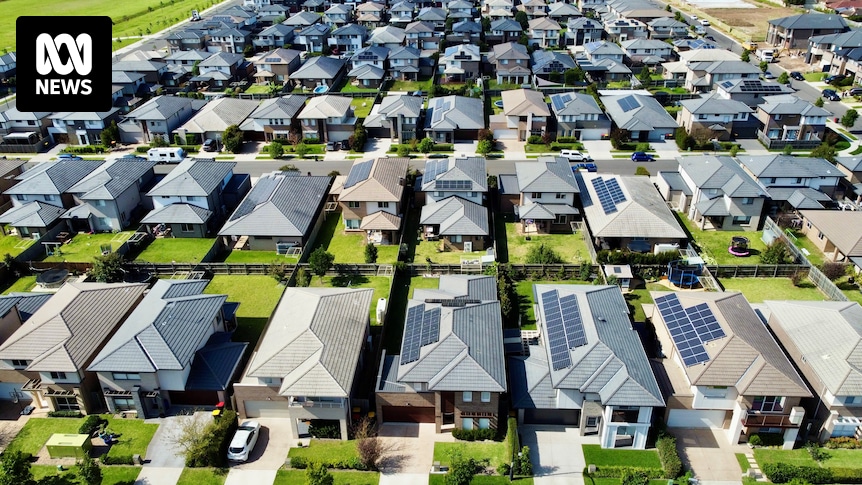
On a narrow plot of land in Sydney, architect Adam Haddow has crafted a 69m² brick house that redefines luxury through minimalism. This innovative design is not just a personal experiment but a potential blueprint for addressing Australia’s housing crisis.
Haddow, who resides in a spacious rooftop apartment, realized that he and his husband were utilizing only a third of their space. This revelation led him to question whether downsizing could enhance their quality of life. The result is a multi-level home on a three-by-ten meter block, featuring a bedroom, study, kitchen, lounge, and a rooftop garden. Smart design elements create an illusion of space, compensating for the limited physical area.
Challenging the Traditional Australian Dream
The house, which won the 2023 Robin Boyd Award for Residential Architecture, has been praised as a “spectacular example of a new approach to urban infill.” This comes at a time when Australia needs to move beyond the traditional four-bedroom standalone house as the sole residential offering.
Architecture expert Kevin McLeod remarked on the liberating nature of Haddow’s design, emphasizing the benefits of reducing excess in both belongings and building size. “There’s a big lesson in this building about letting go,” McLeod noted on ABC’s Grand Designs Australia.
However, the cost of such innovative designs remains prohibitive for many. Despite this, some experts argue that smaller houses could ultimately reduce prices and expedite the building process. Architecture critic Elizabeth Farrelly once attributed the size of Australian homes to societal greed, a sentiment that resonates as household sizes shrink yet house sizes remain among the largest globally.
The Obsession with Space
Haddow believes that Australia’s fixation on the “forever home” has led to unnecessarily large dwellings. The average floor area of newly built detached houses is 232m², according to the Australian Bureau of Statistics. This is a slight decrease from the 2008 peak of 246m², yet still substantial.
Stamp duty and property market dynamics contribute to the trend of larger homes. Larger houses are perceived as better investments, appealing to future buyers. Meanwhile, the need for additional rooms for home offices and gyms has grown, driven by young adults staying longer in parental homes and the rise of remote work.
Could You Live with Less?
Sue Schlesinger, who downsized from a four-bedroom house to an apartment, reflects on the trade-offs. While she misses her backyard, she appreciates the views and the lighter feeling of having less. Professional organizer Lissanne Oliver helped Schlesinger declutter, highlighting the cost of unused space. “In my neighborhood, that cost is roughly $250,000,” Oliver notes.
Oliver poses a thought-provoking question to clients: “What would you actually put in your space if your house burnt down?” This question encourages a reassessment of the necessity of possessions and space.
Rethinking Housing for the Future
Haddow observes a shift towards valuing outdoor space as a luxury, a trend accelerated by the pandemic. He suggests that smaller homes could lead to more outdoor living spaces, a necessity for many Australians.
Property economist Cameron Kusher supports the idea that smaller homes could reduce costs and construction time. He suggests a return to smaller homes that can be easily renovated over time, adding value incrementally.
However, the shortage of well-designed, family-friendly apartments remains a challenge. Increasing housing density through “the missing middle” – units, townhouses, and semi-detached homes – is proposed as a sustainable solution to the housing shortage.
Embracing Smaller Spaces
Dr. Nicola Willand from RMIT argues for embracing smaller spaces for sustainability. She emphasizes the need to integrate environmental and social measures in housing design, considering both the energy consumption of running a home and the embodied energy in construction materials.
“We need a certain amount of space, and if you’ve ever lived in a tiny apartment during COVID with children, you know what I mean,” Dr. Willand says.
As Australia aims to meet housing and environmental targets, the concept of sufficiency – having just enough space – becomes crucial. Dr. Willand highlights the lack of thresholds for maximum space, suggesting that the future of housing must balance necessity and excess.
The conversation around housing size is evolving, with experts and architects like Haddow leading the way. As Australia grapples with a housing crisis, the question remains: Can living with less redefine the Australian Dream?





